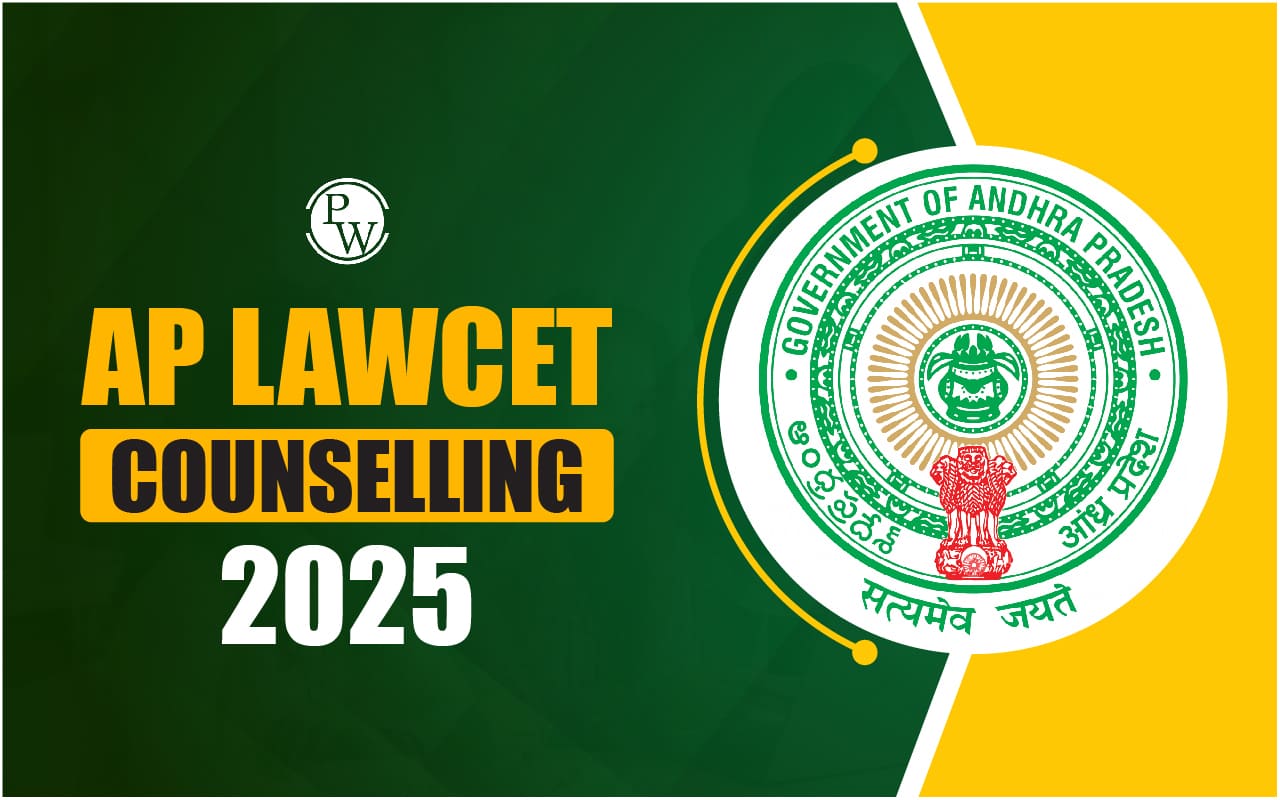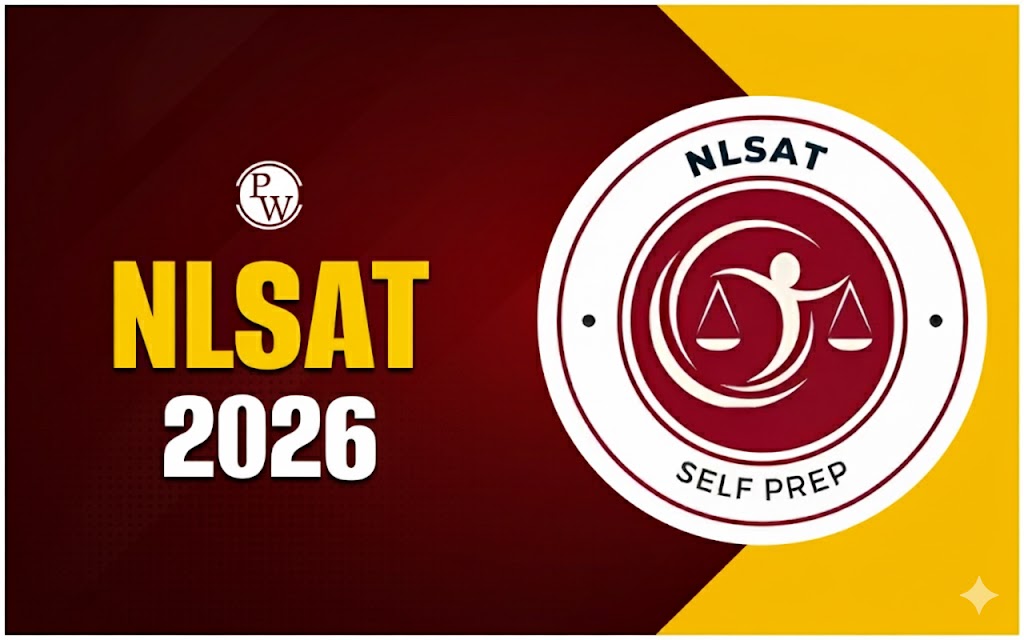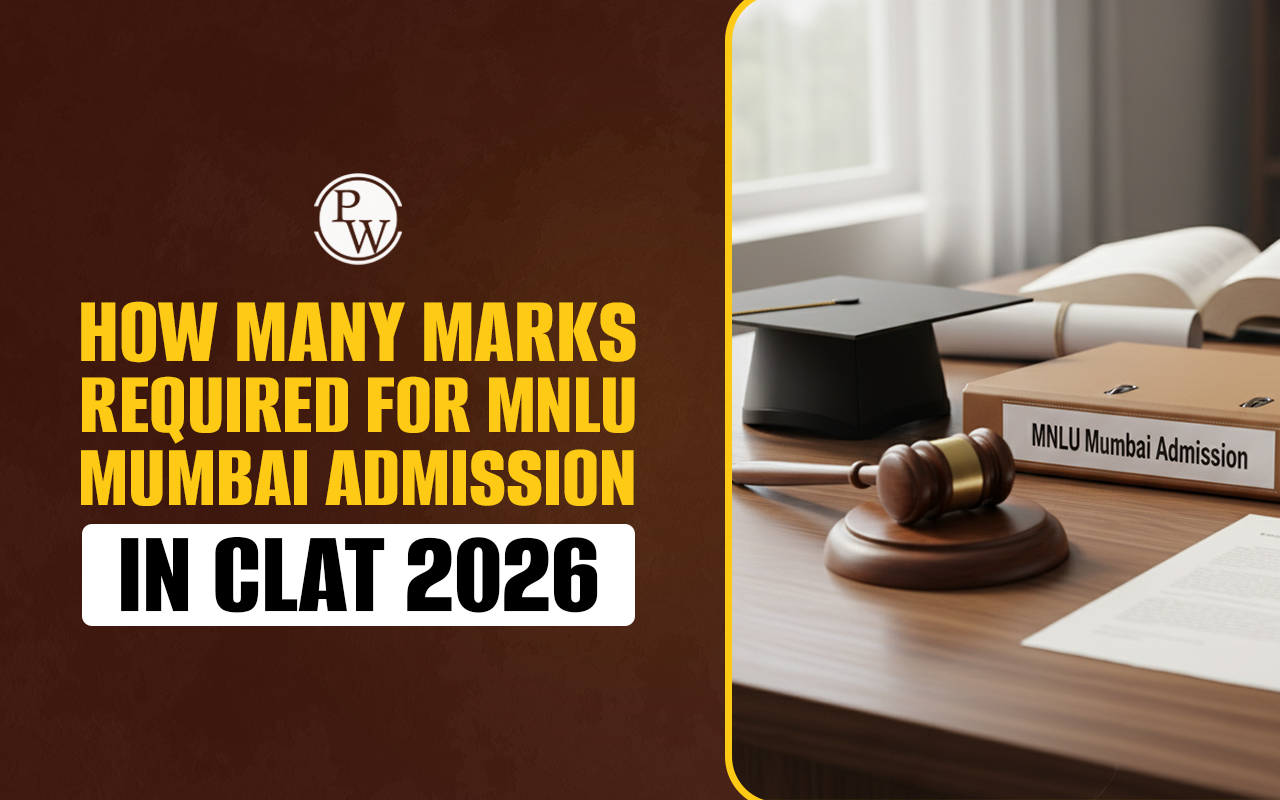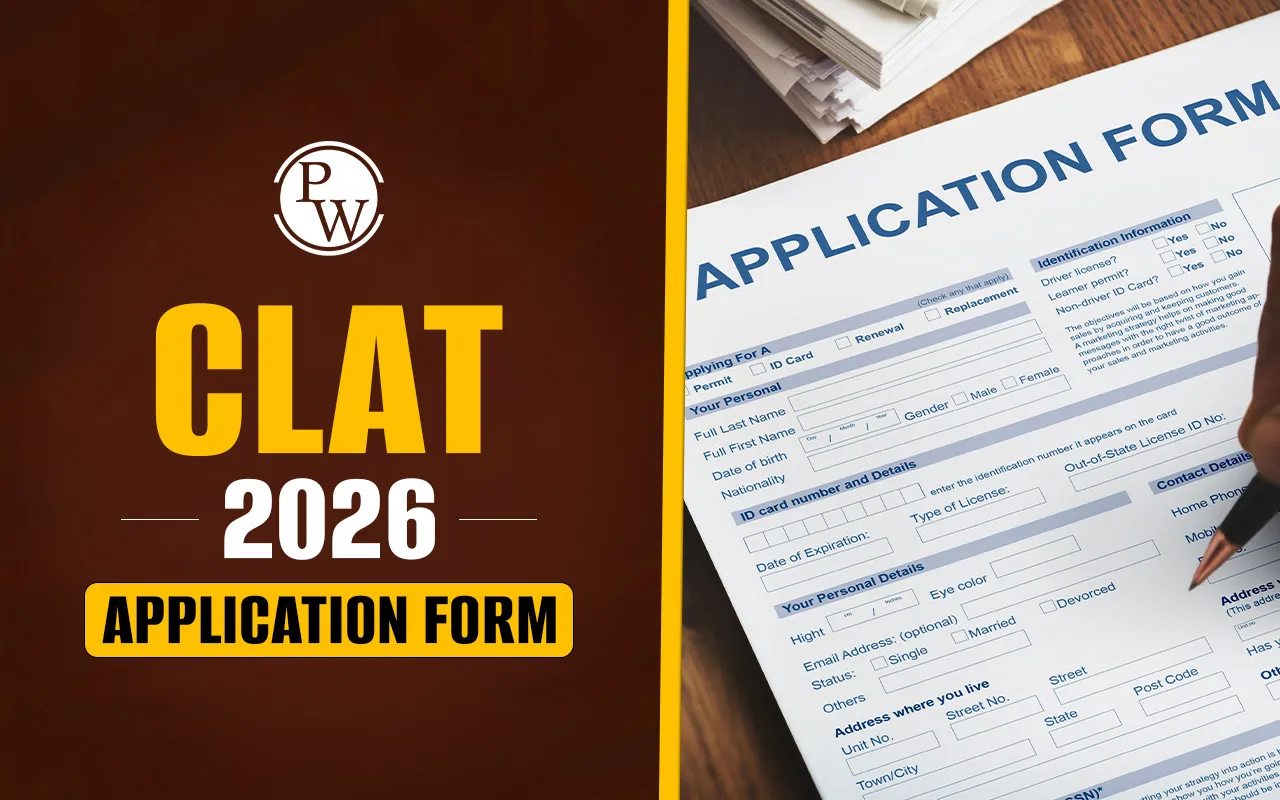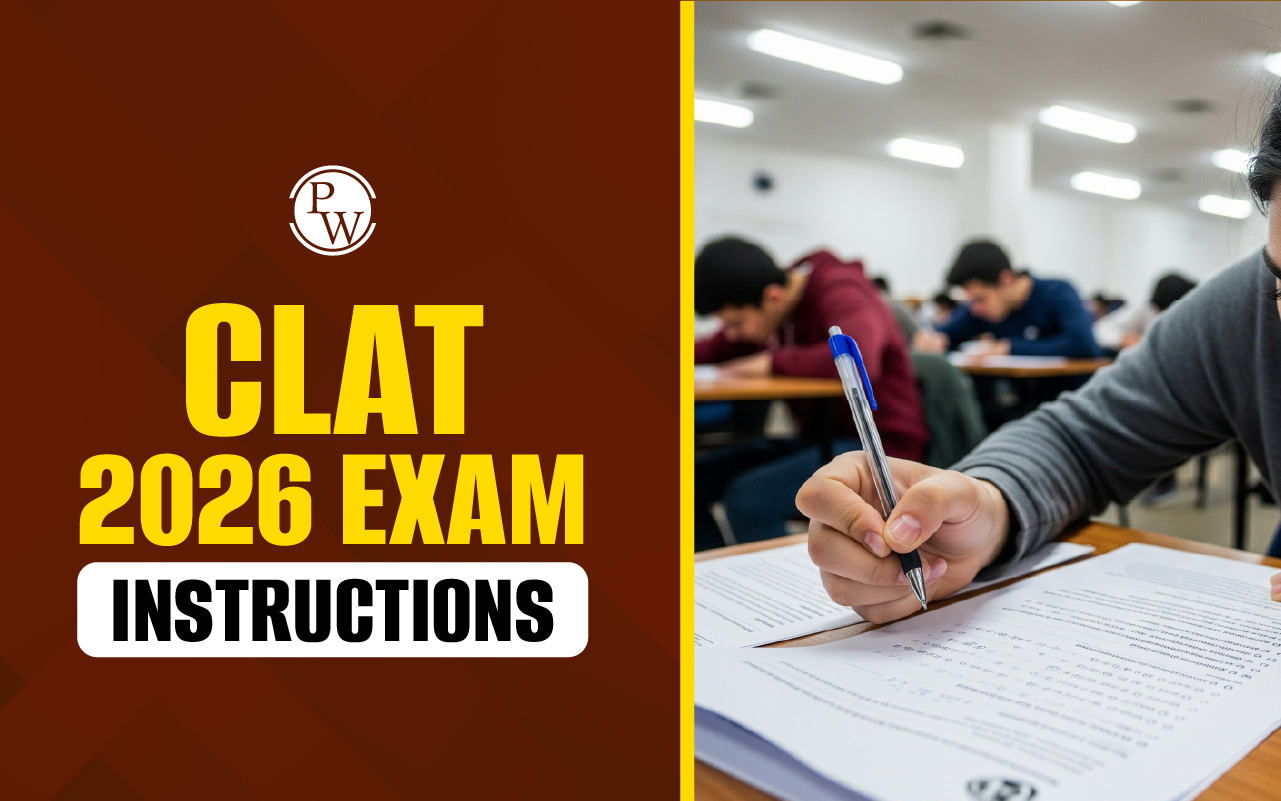
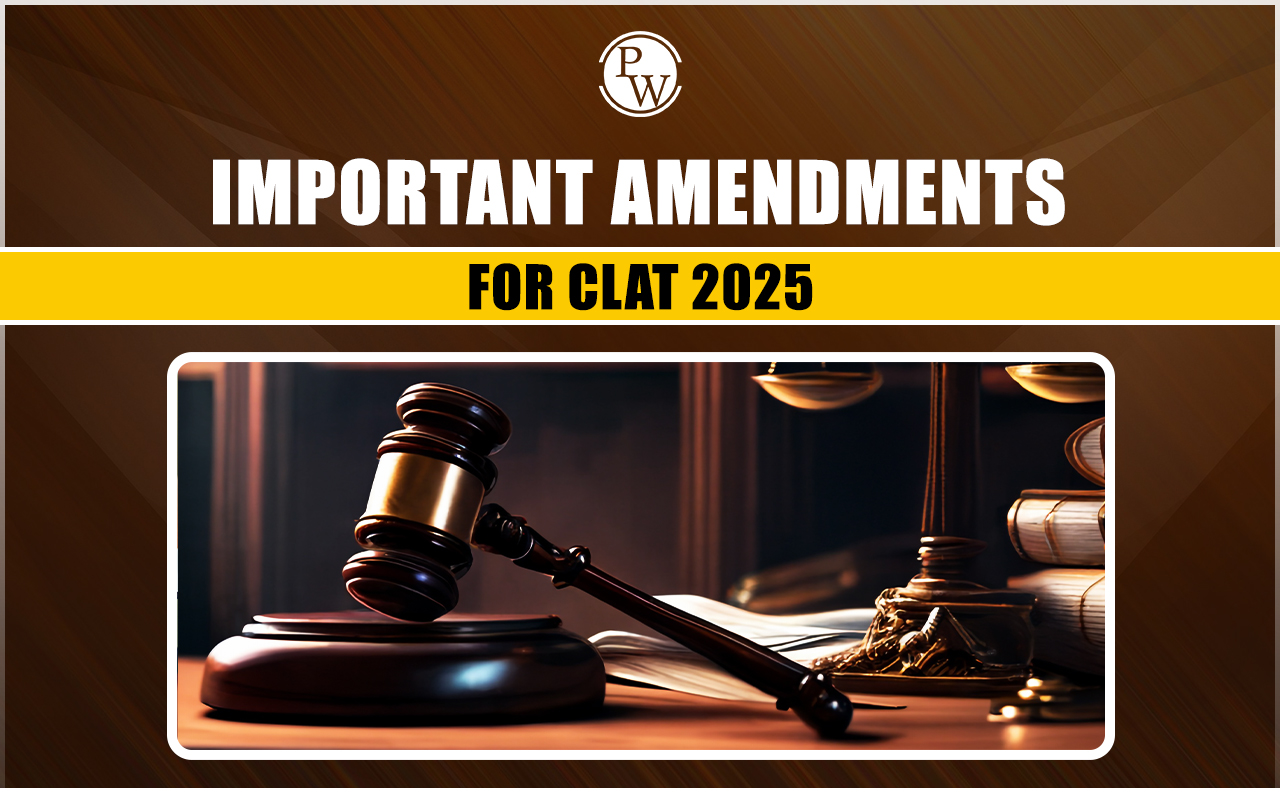
Amendments for CLAT 2026 : The 42nd Amendment passed in 1976, is one of the most important and controversial changes to the Indian Constitution. Often called the "Mini Constitution," it was introduced during a difficult time known as the Emergency (1975-1977). This amendment for CLAT 2026 aimed to strengthen the government's powers while limiting individual rights and the judiciary's authority. It made significant changes to the Constitution, including alterations to the Preamble and fundamental rights.
While it promoted ideas like socialism and national unity, the 42nd Amendment faced heavy criticism for its authoritarian nature and its impact on democracy. Its effects are still felt today, as it raises important discussions about constitutional rights, civil liberties, and the balance of power in India. Checkout the Amendments for CLAT 2026 exam.Checkout Law Books from PW Store
Process of Amending the Indian Constitution
Amending the Indian Constitution is a structured process that allows for necessary changes while safeguarding its fundamental principles. This process involves multiple stages, ensuring that any amendment reflects a broad consensus among both the legislature and the states. Here are the key steps involved:- Proposal : An amendment can be proposed either by Parliament or by state legislatures. If initiated in Parliament, the proposal can begin in either the Lok Sabha or the Rajya Sabha. For state legislatures, the amendment can be introduced in either house of the specific state's legislature.
- Approval : After the proposal is made, it must be approved by both houses of Parliament through a special majority. This special majority requires a two-thirds majority of the members present and voting, ensuring substantial support across the legislative chambers.
- Ratification : Once Parliament approves the amendment, it must be ratified by the states. This ratification process is conducted by the state legislatures, requiring a simple majority (a majority of members present and voting). However, if the amendment involves changes to certain "federal provisions," it necessitates ratification by at least half of the state legislatures to ensure broader consensus among the states.
- Presidential Assent : The final step in the amendment process is obtaining the assent of the President of India. This assent is mandatory; without it, the amendment cannot become part of the Constitution. The president's role is crucial in formalizing the amendment and ensuring it is recognized within the constitutional framework.
Amendments to the Indian Constitution
The Constitution of India is characterized as neither strictly rigid nor entirely flexible. Article 368 grants Parliament the power to amend the Constitution, provided that the "basic structure" remains intact. There are three methods for amending the Constitution:- By simple majority
- By special majority
- By special majority with ratification from at least half of the states
List of important amendments for CLAT
When preparing for the CLAT 2026 exam, understanding key amendments to the Indian Constitution is essential. These amendments have significantly influenced the structure, powers, and functions of the government, as well as the rights and liberties of Indian citizens. Here are some important amendments to focus on:- First Amendment (1951) : The First Amendment addressed judicial interpretations that limited state powers to regulate freedom of speech. It introduced specific restrictions on free expression to maintain public order, decency, and morality. New grounds for limiting free speech included defamation, incitement to an offense, and contempt of court. This amendment was a response to the Supreme Court's ruling in Romesh Thappar vs. State of Madras (1950), which struck down state laws that curtailed free speech.
- Fourth Amendment (1955) : The Fourth Amendment was enacted to rectify issues concerning property rights affected by Supreme Court rulings. It allowed the state to acquire private property for public purposes, mandating "just and adequate compensation" to property owners. This amendment was a response to the judgment in State of West Bengal vs. Bela Banerjee (1954), which invalidated certain state acquisition laws.
- Twenty-Fourth Amendment (1971) : This amendment was introduced to counter the Supreme Court's decision in Golaknath vs. State of Punjab (1967), which held that Parliament could not amend fundamental rights. The Twenty-Fourth Amendment clarified that Parliament has the authority to amend any part of the Constitution, including fundamental rights, and such amendments are not subject to judicial review, reinforcing the supremacy of Parliament.
- Forty-Second Amendment (1976) : Known as the "Mini-Constitution," the Forty-Second Amendment introduced significant changes during the Emergency period (1975-1977). It added the words "socialist" and "secular" to the Preamble, expanded the government's legislative powers concerning public order and security, and restricted the scope of judicial review. The amendment faced criticism for its authoritarian implications and was subsequently revised after the Emergency was lifted.
- 44th Amendment (1978) : This amendment reversed many provisions of the controversial 42nd Amendment, particularly restoring certain fundamental rights that had been curtailed during the Emergency. It also included safeguards against the misuse of emergency powers, reinforcing civil liberties and the democratic framework of the country.
- 52nd Amendment (1985) : This amendment introduced the Anti-Defection Law, aimed at preventing political defections by disqualifying members of Parliament and state legislatures who defect from their political parties. This law was designed to promote party stability and curb the practice of floor-crossing.
- 61st Amendment (1989) : The 61st Amendment lowered the voting age from 21 to 18 years for elections to the Lok Sabha and state legislative assemblies. This change was significant in enhancing youth participation in the democratic process, recognizing the importance of young voters in shaping the future of the nation.
- Seventy-Third Amendment (1992) : This amendment aimed to decentralize power and enhance local self-governance by establishing a constitutional framework for the Panchayati Raj system through the addition of Part IX to the Constitution. It provided constitutional status to Panchayati Raj institutions, ensuring democratic governance at the local level and empowering rural communities to participate in decision-making processes.
- 86th Amendment (2002) : This amendment enshrined the right to education as a fundamental right for children aged 6 to 14 years (Article 21A). It also placed an obligation on parents and guardians to ensure educational opportunities for their children, reflecting a commitment to universal education and child welfare.
- 91st Amendment (2003) : This amendment limited the size of the Council of Ministers to 15% of the total strength of the legislative house. It also tightened the provisions of the Anti-Defection Law, ensuring greater accountability and stability in the government by preventing excessive ministerial appointments.
- Ninety-Fifth Amendment (2010) : Aimed at safeguarding the rights of Scheduled Castes and Scheduled Tribes, the Ninety-Fifth Amendment introduced Article 338B, establishing a National Commission for Scheduled Tribes (NCST). This amendment enhanced the NCST's powers and outlined its composition and functions, addressing the need for improved welfare and protection for Scheduled Tribes in India.
- 99th Amendment (2014) : This amendment aimed to establish the National Judicial Appointments Commission (NJAC) for the appointment and transfer of judges in the higher judiciary. However, it was later declared unconstitutional by the Supreme Court, emphasizing the independence of the judiciary.
- 100th Amendment (2015) : This amendment facilitated the implementation of the land boundary agreement between India and Bangladesh, specifically addressing the exchange of enclaves between the two nations. It was significant in enhancing bilateral relations and resolving long-standing territorial issues.
- 101st Amendment (2016) : This landmark amendment introduced the Goods and Services Tax (GST), transforming India’s tax structure by creating a unified tax system. It aimed to simplify the taxation process, promote ease of doing business, and enhance revenue efficiency.
- 103rd Amendment (2019) : This amendment provided for a 10% reservation in government jobs and educational institutions for economically weaker sections of society. It marked a significant step towards inclusive governance and social equity, ensuring that economically disadvantaged groups have access to opportunities.
Features of 42nd Amendment
Here are some key features and changes introduced by the 42nd Amendment:- Fundamental Duties : The amendment added a new part (Part IVA) to the Constitution, which enumerates the Fundamental Duties of citizens. These duties serve as a reminder to citizens of their responsibilities towards the nation.
- Preamble : The amendment made changes to the Preamble of the Constitution by adding the words "Socialist," "Secular," and "Integrity," thereby emphasizing the commitment to these principles.
- Judicial Review : The amendment limited the power of judicial review by stating that any law passed by Parliament cannot be challenged in courts on the grounds of violation of Fundamental Rights if it is made to give effect to the Directive Principles of State Policy.
- Parliamentary Power : It expanded the powers of Parliament by allowing it to legislate on matters in the State List under certain circumstances.
- Election of the President: The amendment made provisions for the election of the President and Vice President of India, ensuring that the electoral process was more streamlined.
- Duration of the Legislative Assemblies : The amendment extended the duration of the Lok Sabha and State Legislative Assemblies from five years to six years.
- Amendment Process : It also altered the process for amending the Constitution, making it easier for Parliament to amend certain provisions.
- Constitutional Authority : The amendment sought to enhance the authority of the central government over the states, thereby centralizing power.
Important Amendments for CLAT 2026 FAQs
What is the significance of amendments in the Indian Constitution?
Amendments are crucial as they allow the Constitution to adapt to changing social, political, and economic contexts. They ensure that the Constitution remains relevant and responsive to the needs of the country and its citizens.
How many amendments have been made to the Indian Constitution?
As of now, there have been 105 amendments to the Indian Constitution since its adoption in 1950. Each amendment has contributed to the evolution of constitutional law in India.
Which amendment is referred to as the "Mini Constitution"?
The 42nd Amendment, enacted in 1976, is often called the "Mini Constitution" due to its extensive changes to various provisions of the Constitution during the Emergency period.
What is the eligibility criteria for CLAT 2026?
For undergraduate programs, candidates must have completed their 10+2 with a minimum of 45% marks (40% for SC/ST). There is no specific age limit.
How is the CLAT exam structured?
The CLAT exam consists of 120 multiple-choice questions to be completed in 120 minutes. Each correct answer awards one mark, while incorrect answers incur a penalty of 0.25 marks .
Talk to a counsellorHave doubts? Our support team will be happy to assist you!

Check out these Related Articles
Free Learning Resources
PW Books
Notes (Class 10-12)
PW Study Materials
Notes (Class 6-9)
Ncert Solutions
Govt Exams
Class 6th to 12th Online Courses
Govt Job Exams Courses
UPSC Coaching
Defence Exam Coaching
Gate Exam Coaching
Other Exams
Know about Physics Wallah
Physics Wallah is an Indian edtech platform that provides accessible & comprehensive learning experiences to students from Class 6th to postgraduate level. We also provide extensive NCERT solutions, sample paper, NEET, JEE Mains, BITSAT previous year papers & more such resources to students. Physics Wallah also caters to over 3.5 million registered students and over 78 lakh+ Youtube subscribers with 4.8 rating on its app.
We Stand Out because
We provide students with intensive courses with India’s qualified & experienced faculties & mentors. PW strives to make the learning experience comprehensive and accessible for students of all sections of society. We believe in empowering every single student who couldn't dream of a good career in engineering and medical field earlier.
Our Key Focus Areas
Physics Wallah's main focus is to make the learning experience as economical as possible for all students. With our affordable courses like Lakshya, Udaan and Arjuna and many others, we have been able to provide a platform for lakhs of aspirants. From providing Chemistry, Maths, Physics formula to giving e-books of eminent authors like RD Sharma, RS Aggarwal and Lakhmir Singh, PW focuses on every single student's need for preparation.
What Makes Us Different
Physics Wallah strives to develop a comprehensive pedagogical structure for students, where they get a state-of-the-art learning experience with study material and resources. Apart from catering students preparing for JEE Mains and NEET, PW also provides study material for each state board like Uttar Pradesh, Bihar, and others
Copyright © 2025 Physicswallah Limited All rights reserved.
Get App

